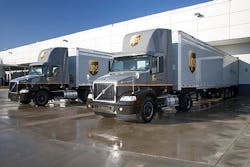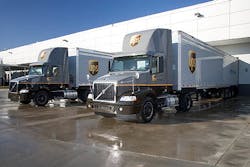UPS Freight, for example, posted a general rate increase (GRI) of 4.4% to its non-contractual LTL shipments, with FedEx Freight imposing a 3.9% average rate increase, ABF Freight System unveiling a 5.4% rate boost, and Con-way Freight following on with its own 5.4% rate hike – with all of them applicable to non-contractual business and all effective March 31.
Yet it’s that “non-contractual” disclaimer that’s critical to this rate increase discussion, noted David Ross, managing director with the transportation and logistics group at Wall Street investment firm Stifel Nicolaus & Co.
“Every year, most LTL carriers announce a general rate increase; a practice driven by the legacy union operating environment where the number one cost input – labor – rose contractually every year,” he noted in a recent research brief. “Even though the LTL industry is now predominantly non-union and union workers have actually taken wage concessions recently, this practice continues.”Ross stressed, however, that those increases are NOT indicative of the overall pricing environment in Stifel’s view. “If there is oversupply in the industry, most, if not all, of the announced increase ends up getting discounted away, whereas if supply and demand is tight, rates rise more,” he explained. “We believe pricing is pretty good in LTL right now and most carriers expect to get 3%+ net pricing this year.”
Stifel’s analysis contends that GRIs are rather insignificant as they only apply to between 25% and 30% of an LTL’s “book of business.” The rest is under contract with larger accounts and negotiated separately. Thus it's not how much that's announced, but rather, how much is kept that's important.
“Ironically, in our opinion, the customers who are subject to these annual rate increases—the small shippers—are the most profitable accounts for the LTL carriers, and have historically subsidized the high-volume national accounts,” Ross said. “We believe the higher these rates go, the more likely the small shippers are to start using a 3PL [third party logistics firm] or [freight] broker to get a better rate. Of course, the 3PL then just takes that margin away from the carrier.”
Within its analysis, Stifel looked at the rate increases Con-way Freight announced over the last several years and compared it to the carrier’s overall yield – basically looking to see if rate increases translated into profits. Con-way’s GRIs:
- Jan 2010 – 5.9%
- Nov 2010 – 6.9%
- July 2011 – 6.9%
- June 2012 – 6.9%
- May 2013 – 5.9%
- March 2014 – 5.4%
“As seen above, list rates have risen 37% in the past four years before the latest increase, which would take it to 44%,” noted Ross. “Con-way Freight’s overall yield, though, excluding fuel surcharges, has only risen 16% since then – an increase that rises to 23% when including fuel surcharges.”
Thus, according to Stifel’s parsing of LTL rate data, at the end of the day real pricing is much lower than the announced increases.
That’s not to say such “real pricing” won’t surge in the months ahead as uncertainty over capacity on both the LTL and TL side of trucking’s ledger remains high. But it’s an interesting point to keep in mind as I expect more talk about rate increases as we move into a long-awaited springtime.


